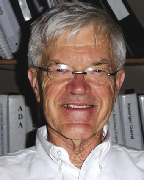What's missing for growth of the retail sector today ? Liquidity aside, I suggest that these two factors, convenience and community, are key and need attention in the face of competition from internet sales and the perceived lack of time in our lives. Mark Briggs at Carpionato properties would agree with the first of these.
Disclosure: I live in Newtonville and can easily walk or bike to a grocery store, the boxing club, the church, the office, the bank et al...all within a half mile of home!
We buy books at a local bookstore and pay a modest premium via discount operation or Amazon.com. The payoff is great, however, in terms of the relationship with the store clerks and my neighbors who use the same store, we handle the book before buying, we wait if the book is not in and occasionally attend the public authors' nights in the store to hear the truth!
This example is repeated in downtowns and retail centers all over New England where local enterprises are being acknowledged by shoppers for their community orientation and, inadvertenly, the convenience they represent by virtue of their proximity to the pharmacy, the bank, the bread store, the coffee shops and the drycleaners. When running errands on a Saturday, this matter of convenience really counts.
Another example of community building is Len Bierbrier's block of stores on a former MBTA site in Arlington Heights. Len's building is brought forward on the site and parking is located in the rear.The forward siting of the building meant that the existing streetscape was recognized and the retail community of Arlington Heights was solidified. More recent buildings in that neighborhood have followed the same approach in their site planning and this Mass Ave. neighborhood is looking more like the great neighborhood it is. It was significant that the Arlington Redevelopment Board who approved Len's project included an articulate architect on its membership...I submit the community's control and input has paid off for both the Arlington Heights community and a developer who eventually added another building on an adjacent site.
What's frequently missing is the matter of multifamily housing near our retail centers. When the condo towers showed up over the roof of the Natick Collection Mall I was bemused at first and now give the developer credit for acknowledging the matter of not only convenience, but also for following his inclination to create a richer mix of uses on his site.
Norfolk, Mass., also has benefitted from an architect on the board. (first, you've got to find Norfolk!) Bob Nicodemus guided the conversation for a new village center in Norfolk which includes new multi-family housing overlooking a proposed retail center and, for both, just a short jump to the T's commuter rail station. The story was that citizens of this town had to travel outside the town to get a prescription filled and some never found their way home. That's inconvenient. The Norfolk village center consisting of six or seven new retail / office buildings, depicted beautifully in Luis Cetrangolo's sketches, will eventually be anchored by a supermarket which will make shopping at the recently opened Walgreens only more convenient.
The Norfolk Planning Board has been attentive and supportive of this village center/community iniative and I look forward to Norfolk getting that supermarket on board soon. Community works when all the key pieces are present.
A much larger mixed-use "village center" is looming in our midst, that being Vornado's new Downtown Crossing project. My instinct is that Vornado's new program will include retail with some office/institutional at the lower levels and housing above. Further, that the success of the project will ride on how well the two use types are defined and support each other and how together they enrich the neighborhood. These are design issues and it is through the implementation of a powerful design that the project will feed and be fed by the neighborhood; i.e. that matter of community building via planning and architecture.
When Nathanael Seiler, a former intern, was a student at Wentworth he took on Downtown Crossing as his thesis project. Nathanael observes that the old Filene's site has potential as the "hearth" of the whole area, inviting people from up at the Common and down in the financial district to its riches. And, that Vornado will need to get it right, especially with the atmosphere its new building creates at the first floor level. The new architecture of Downtown Crossing will redefine its community with the potential of creating an atmosphere of prosperity and celebration.
That says it: when convenience and community are recognized and provided for in the architecture and planning of our retail neighborhoods there arise possibilities for all sorts of good, including a simpler more sustainable life style.
Mark Dooling, AIA is principal at Dooling Woodbrier Architects, Inc., Newton, Mass.
Tags:
What's missing for growth in the retail sector today? The architecture of convenience and community
January 27, 2011 - Retail









